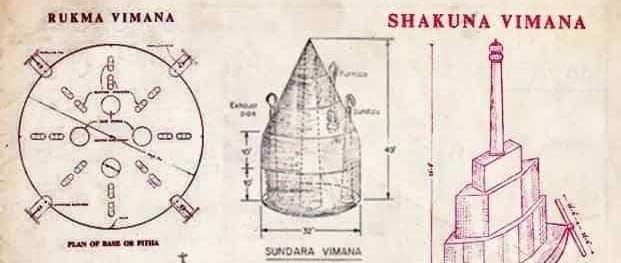Intriguing Secrets of the Vaimanika Shastra: Ancient Indian Aeronautics
Sahil Sharma
10/21/20233 min read


The Vaimanika shastra, a fascinating ancient Indian text, has captured the imagination of researchers and enthusiasts for decades. This ancient manuscript, which dates back to the first documented history around the 4th century BC, is believed to contain profound insights into the field of aerospace engineering. Within its pages, it describes a wide range of concepts, including the enigmatic "Mercury Vortex Engine," which has baffled and intrigued scientists and scholars alike.
History of the Vaimanika shastra
The Vaimanika shastra, also known as the "Science of Aeronautics," is one of several ancient Indian texts that delve into the realms of technology, science, and engineering. It is attributed to the legendary sage Maharishi Bharadwaj, who is said to have documented this knowledge from his observations of advanced technology used during his time. The text itself is a compilation of a series of verses and illustrations, detailing the construction and operation of Vimanas, which are ancient flying machines.
While some skeptics view the Vaimanika shastra as a product of mythology or folklore, proponents argue that it provides valuable insights into the advanced technological and scientific knowledge of ancient India. They believe that these texts reveal a depth of understanding of aerodynamics, metallurgy, and propulsion systems that was ahead of its time.
Concepts in the Vaimanika shastra
One of the most intriguing aspects of the Vaimanika shastra is the concept of the "Mercury Vortex Engine," which is described as the power source for the Vimanas. This concept has garnered considerable attention and speculation. Here are some key concepts detailed in the Vaimanika shastra:
Vimana Design: The text elaborates on the design and construction of Vimanas, describing them as circular or elliptical aircraft made from various metals, including aeronautic alloys like "Raudra." These flying machines were believed to be capable of vertical takeoff and achieving incredible speeds.
Mercury Power Source: The Mercury Vortex Engine is a central element of Vimana propulsion. According to the text, a rotating mercury-based engine generates a powerful vortex that can be controlled to propel the Vimana through the air. This concept is often likened to a form of anti-gravity propulsion.
Material Science: The Vaimanika shastra delves into the importance of specific alloys and materials used in Vimana construction. It mentions the use of lightweight yet strong materials, some of which are believed to be resistant to heat and radiation.
Pilot Control: The text also explains the controls and navigation of Vimanas, suggesting that they had advanced instrumentation and communication systems for piloting these aerial vehicles.
Interpreting the Mercury Vortex Engine
The Mercury Vortex Engine, in particular, has raised numerous questions and sparked debates. Some scientists and engineers have tried to analyze and interpret this concept in the context of modern science and technology. While there is no concrete evidence to prove or disprove the validity of the Mercury Vortex Engine, some intriguing possibilities have been suggested:
Anti-Gravity Technology: The idea of using a rotating mercury vortex to generate a form of anti-gravity propulsion is reminiscent of modern theories involving electromagnetic fields and superconductors. It is important to note that these theories remain largely speculative and unproven.
Advanced Metallurgy: The Vaimanika shastra's emphasis on materials science has piqued the interest of researchers. Some have explored whether ancient Indian metallurgy had unique capabilities that enabled the construction of advanced flying machines.
Symbolism or Allegory: Skeptics argue that the text may be symbolic or allegorical, rather than a literal description of flying machines. Some suggest that it could be a spiritual or philosophical text rather than a practical manual.
Conclusion
The Vaimanika shastra remains an enigmatic and highly debated text that offers a window into the technological and scientific knowledge of ancient India. Whether it represents advanced aerospace engineering or is steeped in myth and symbolism, its study continues to intrigue and inspire those interested in ancient technology and the history of human innovation. The Mercury Vortex Engine, in particular, remains a captivating concept that serves as a bridge between ancient legends and modern science, leaving us with more questions than answers about the capabilities of our distant ancestors.
